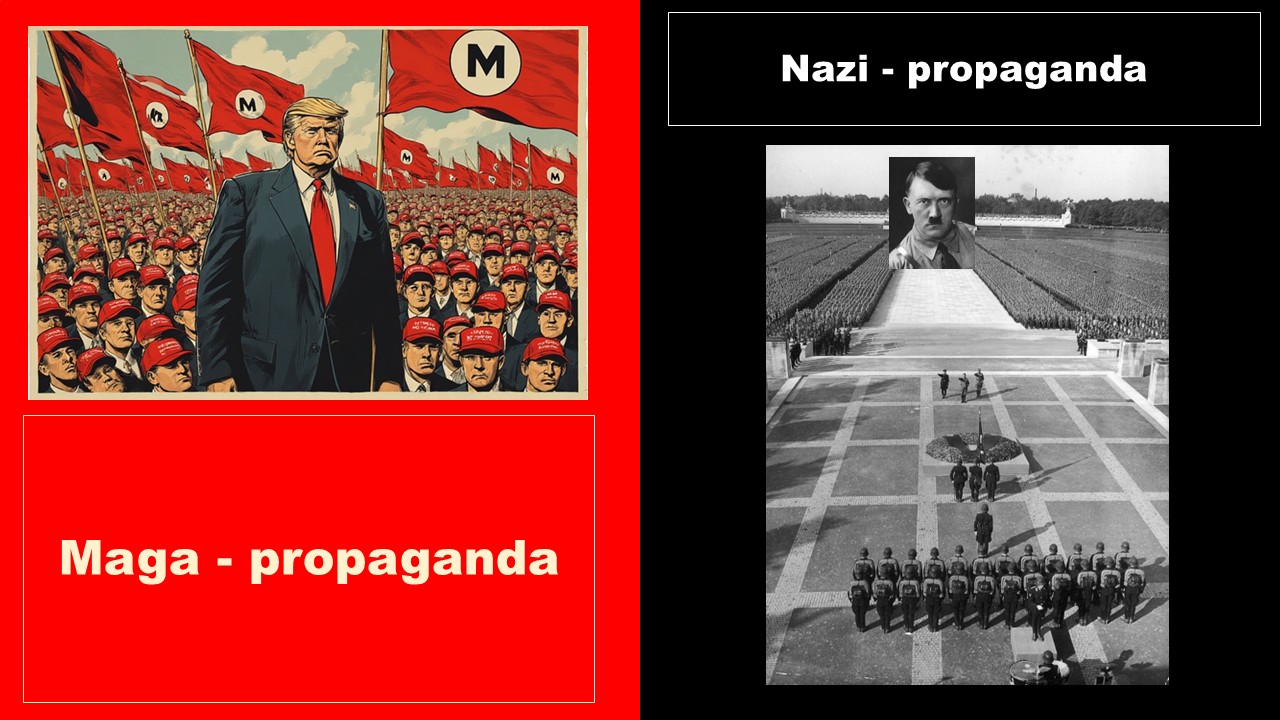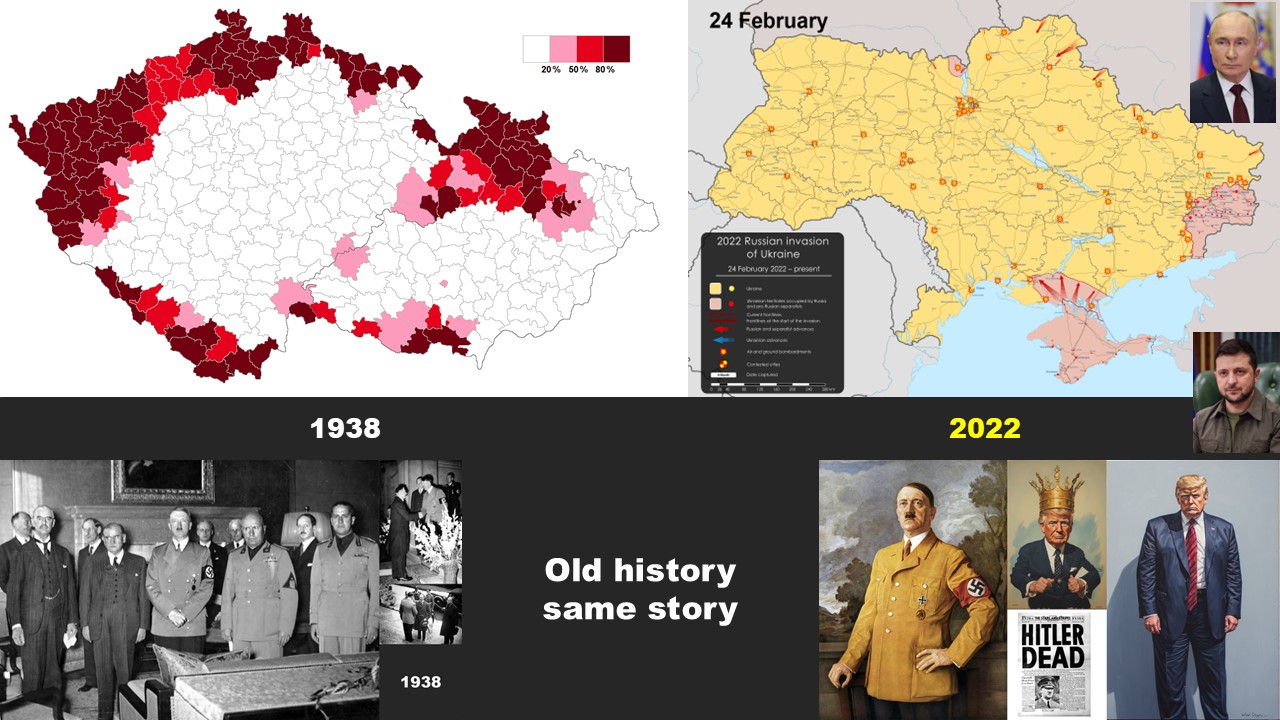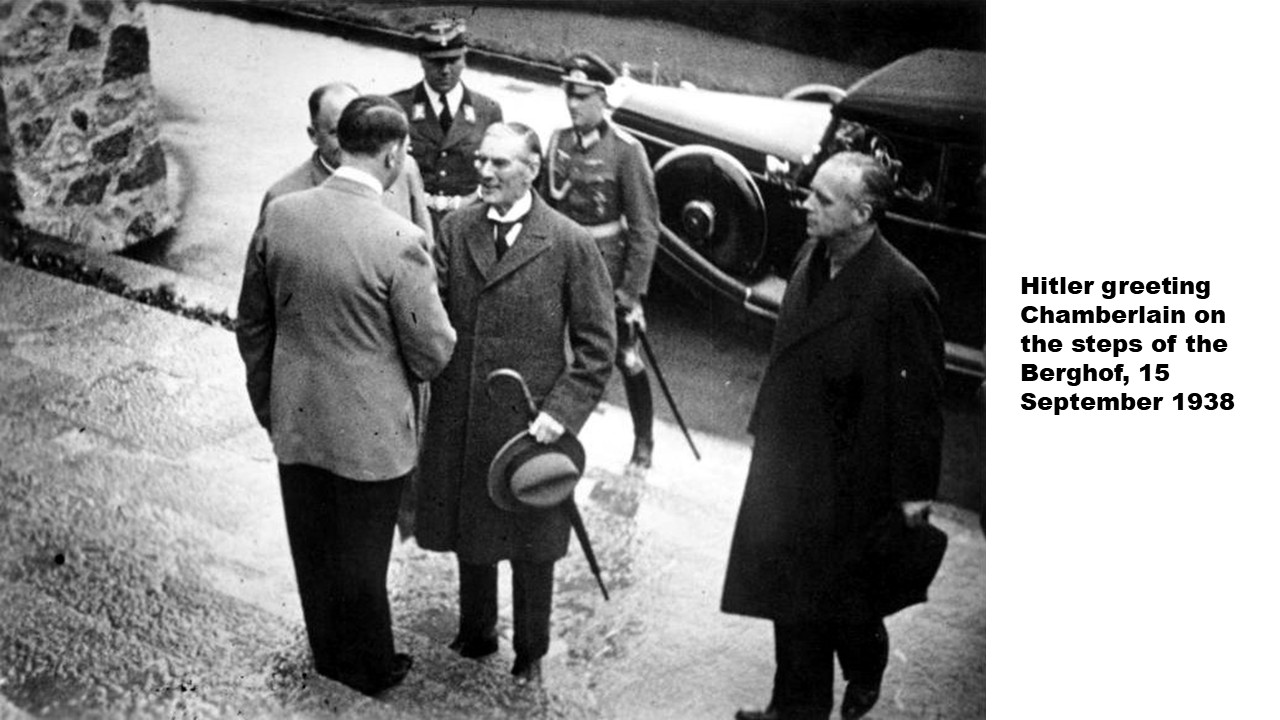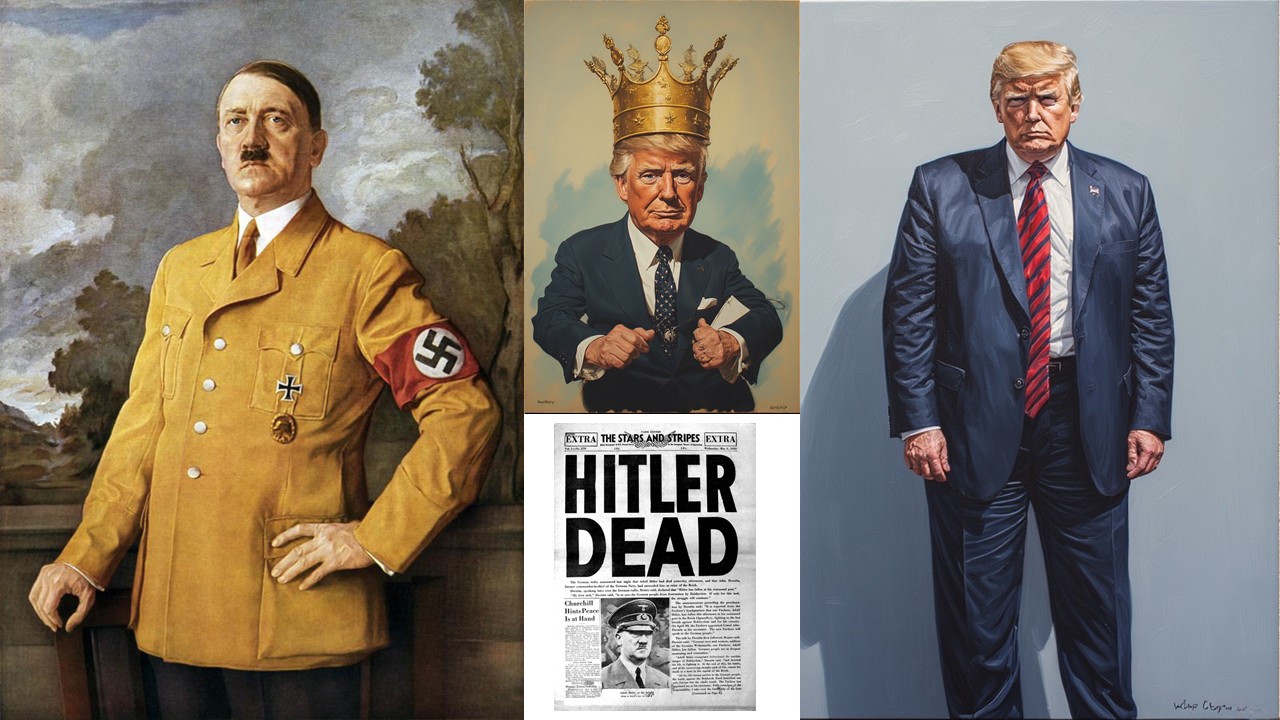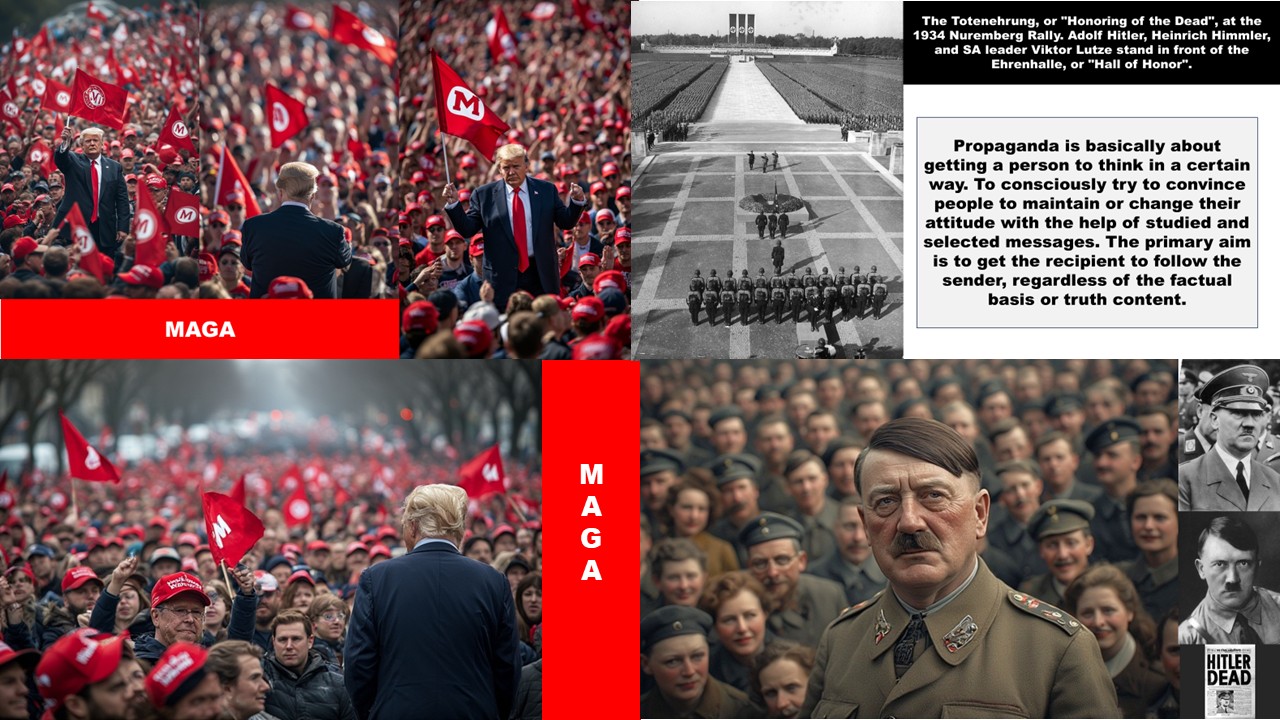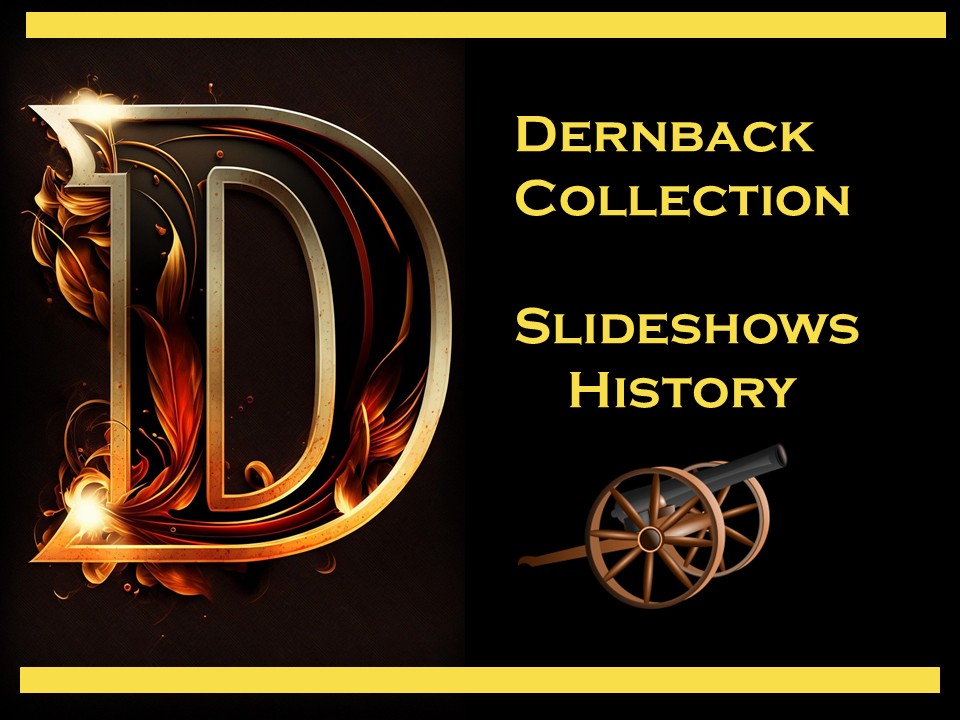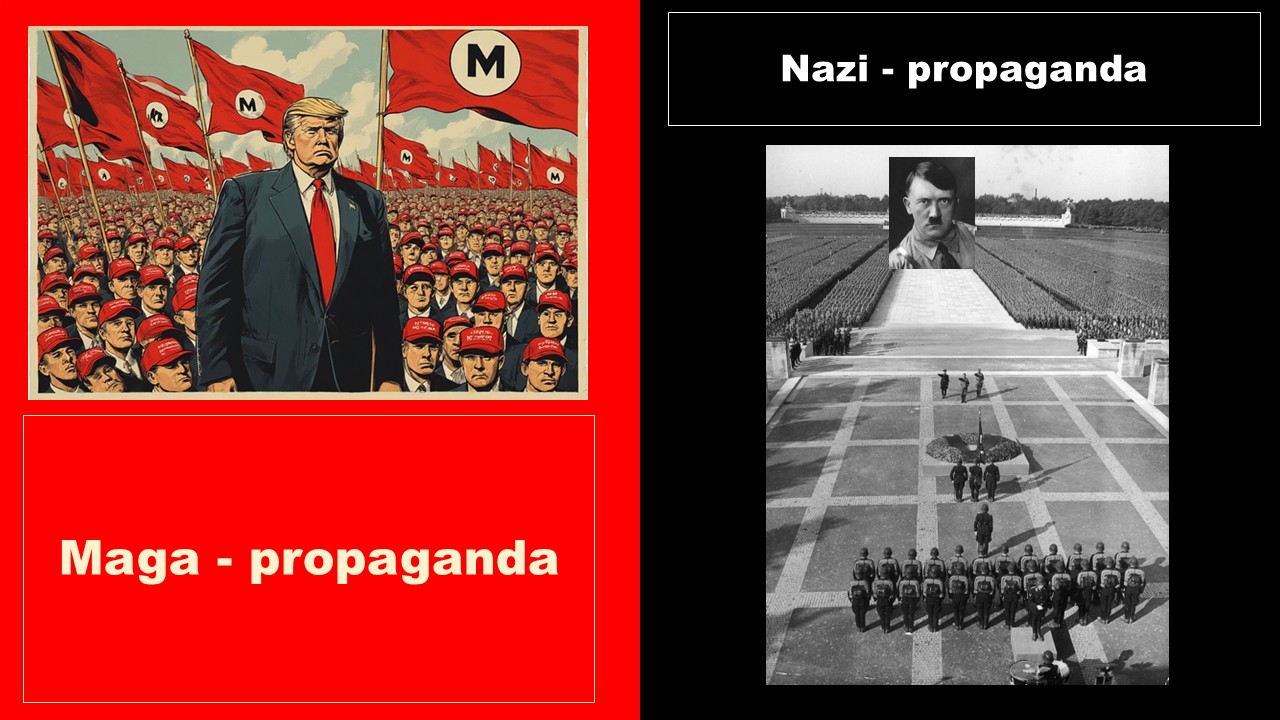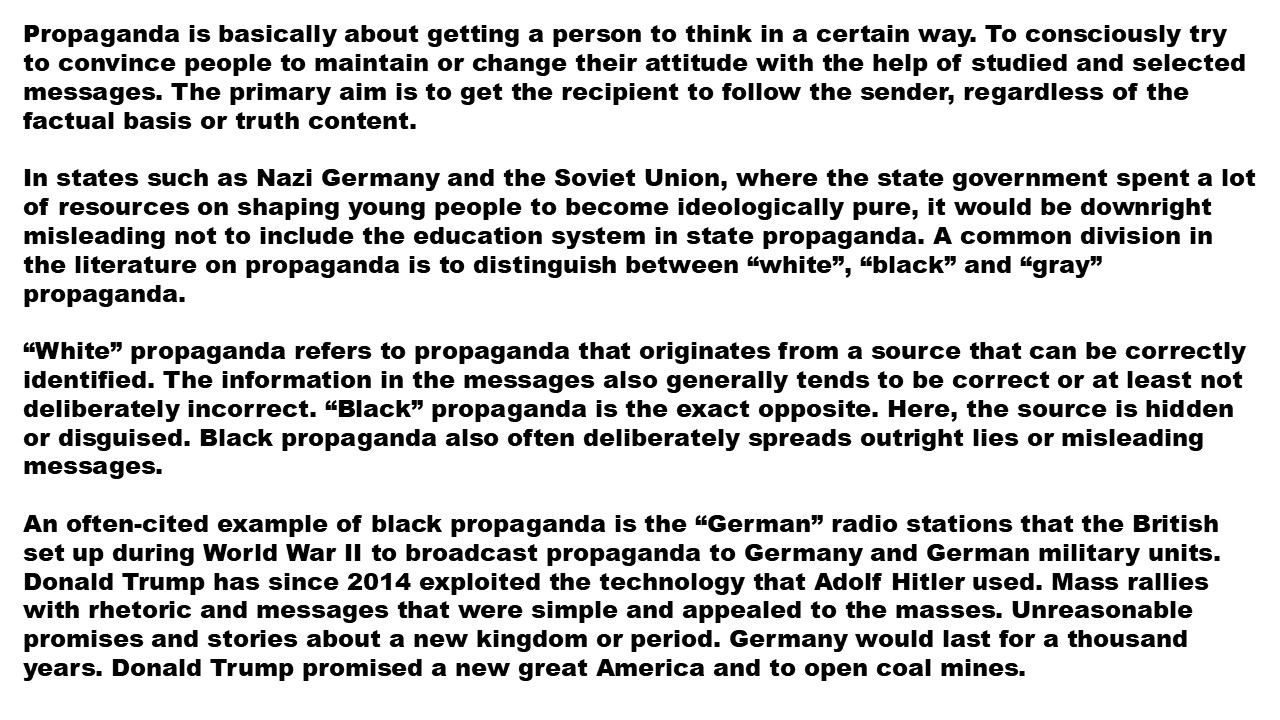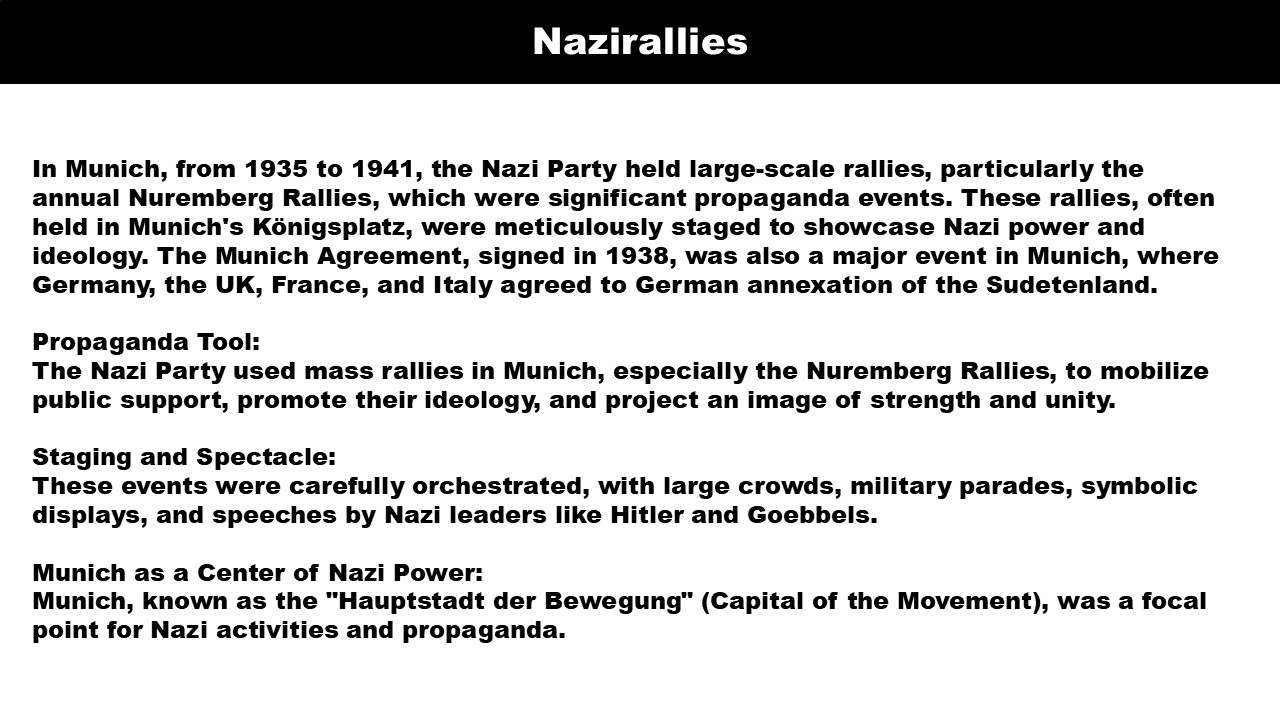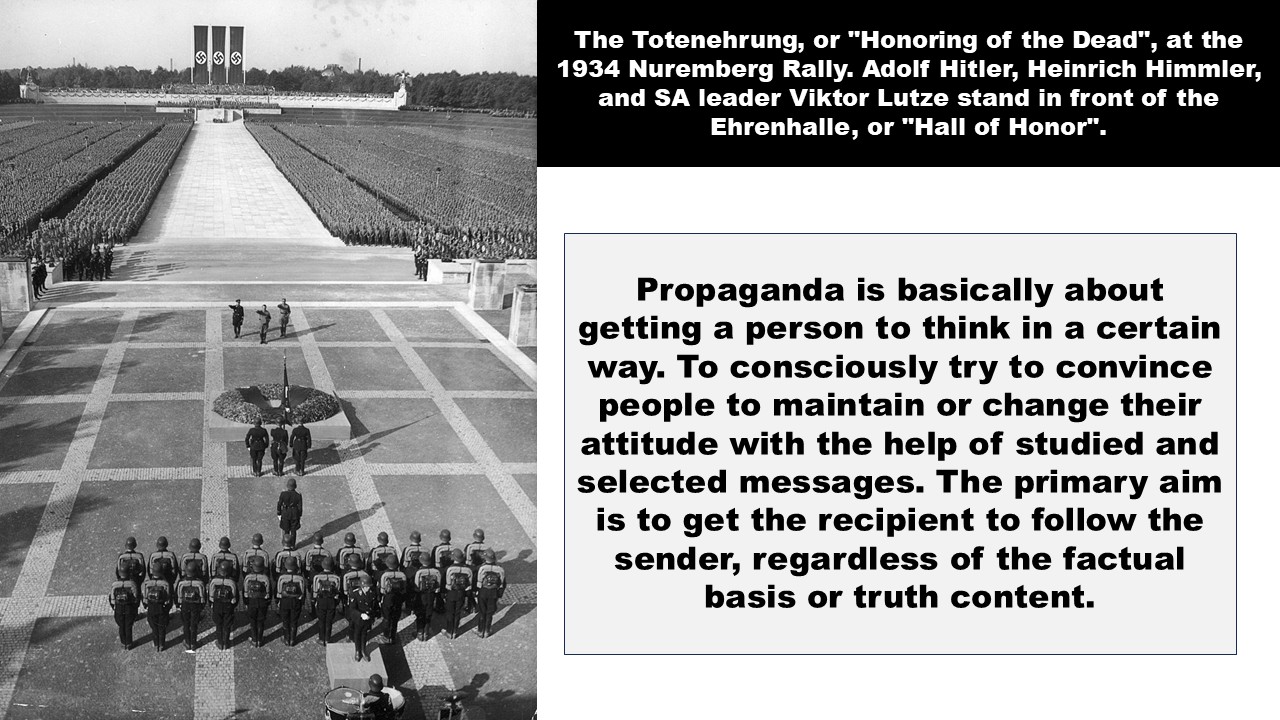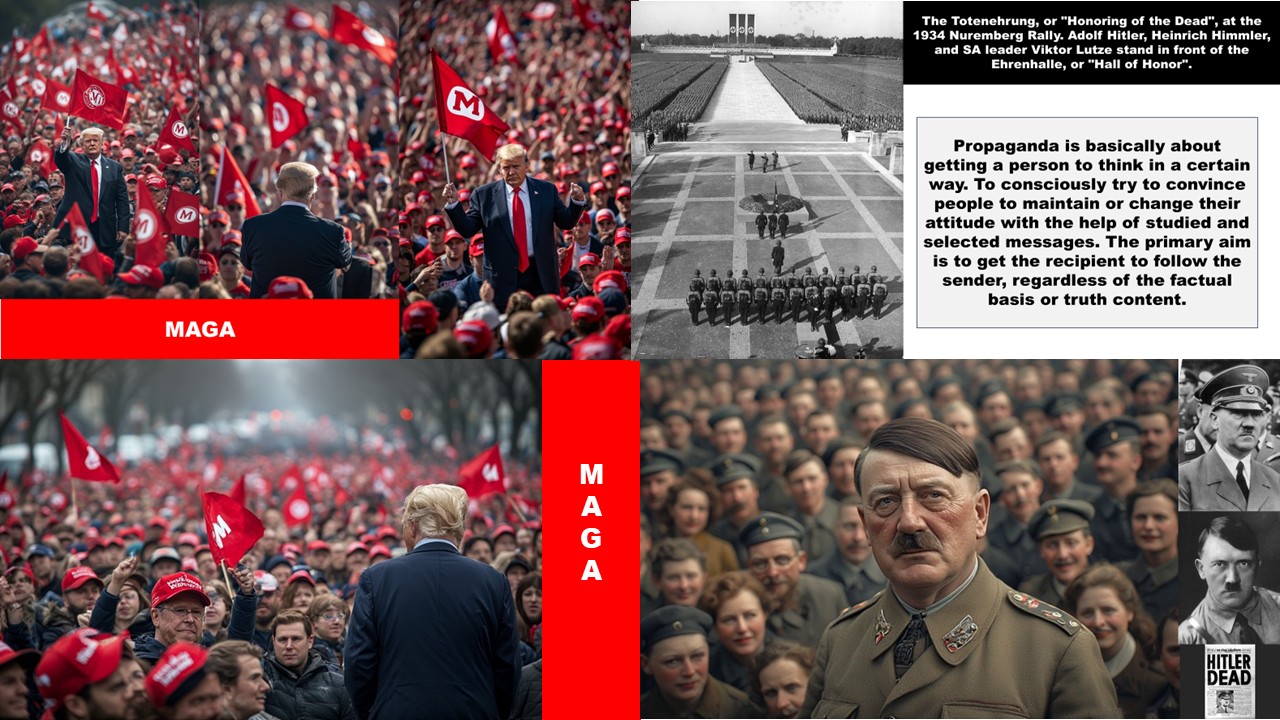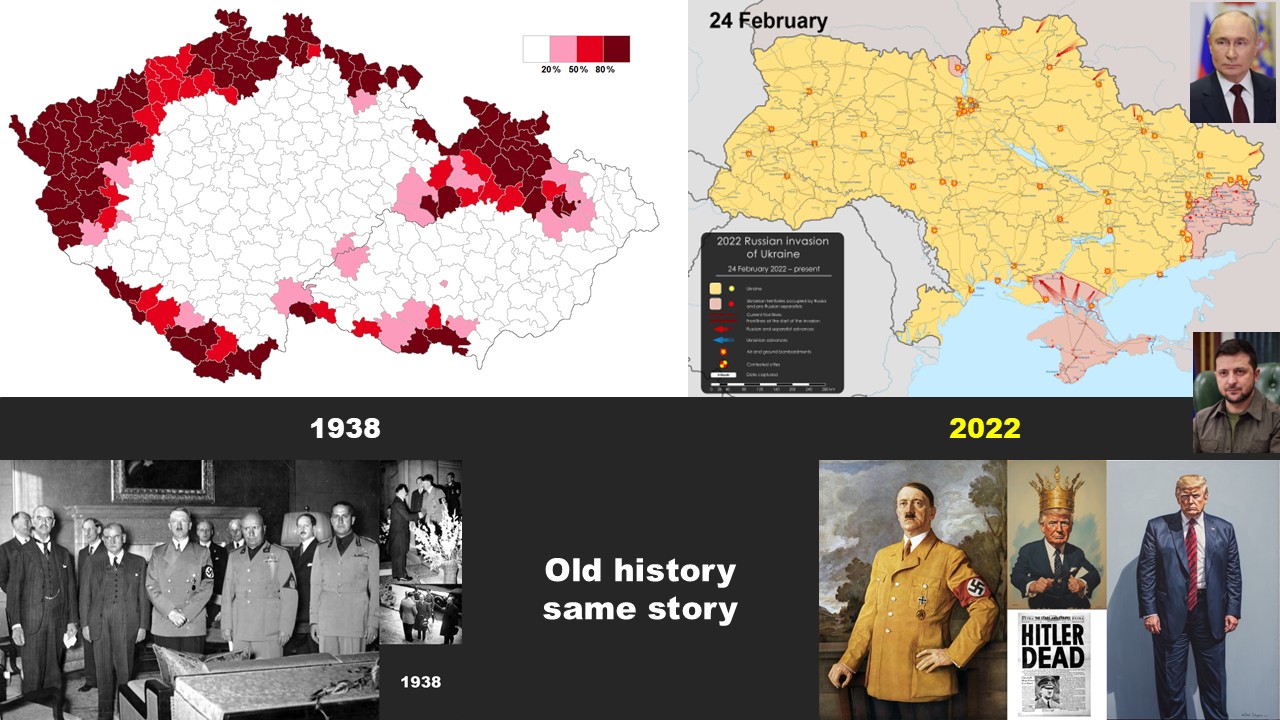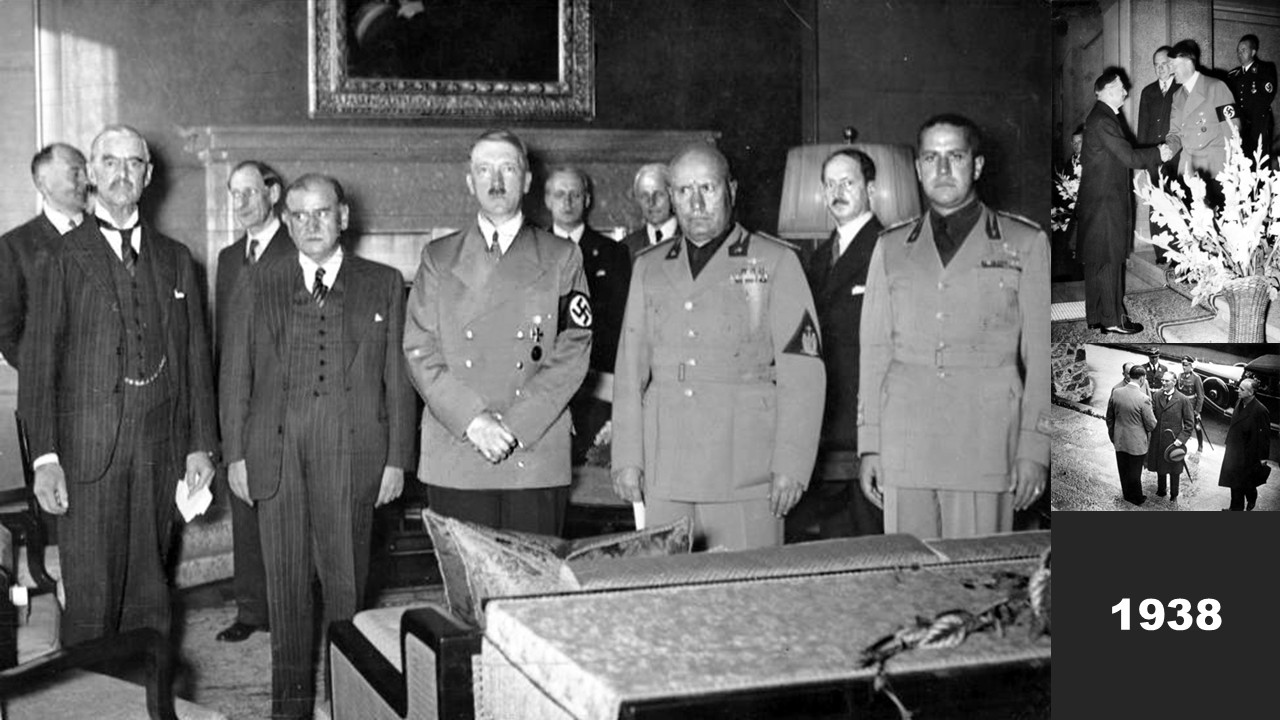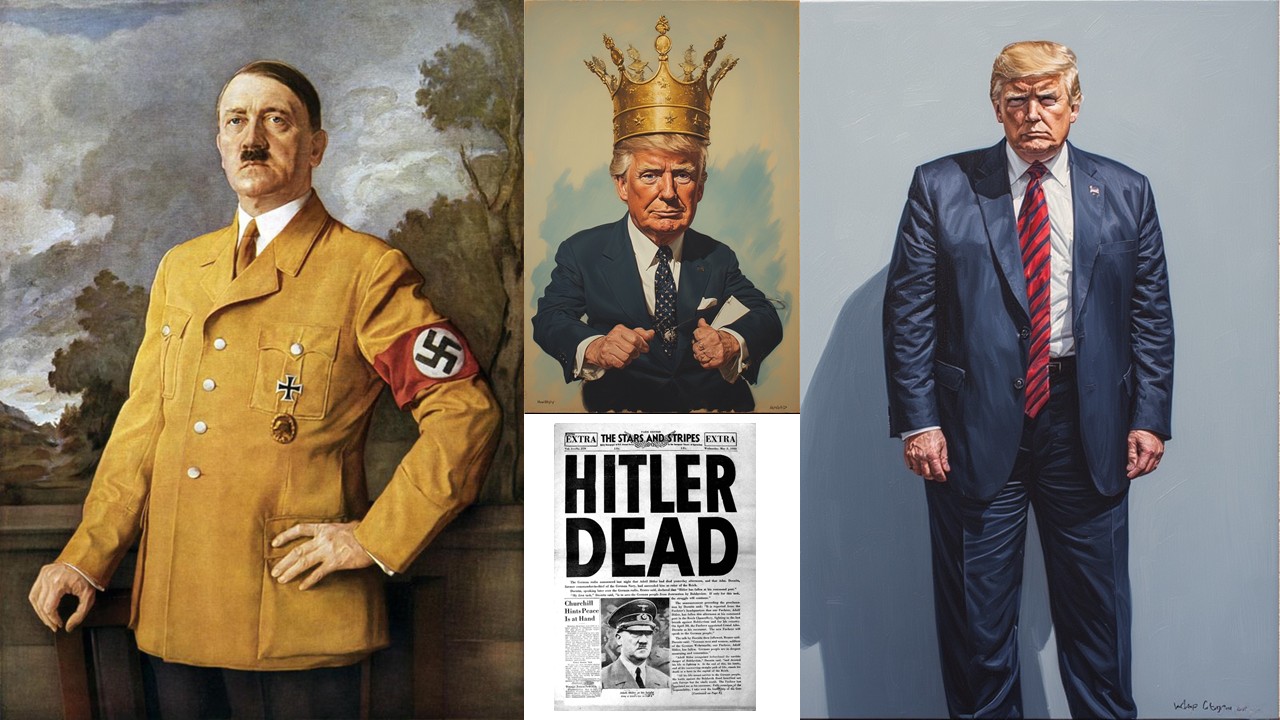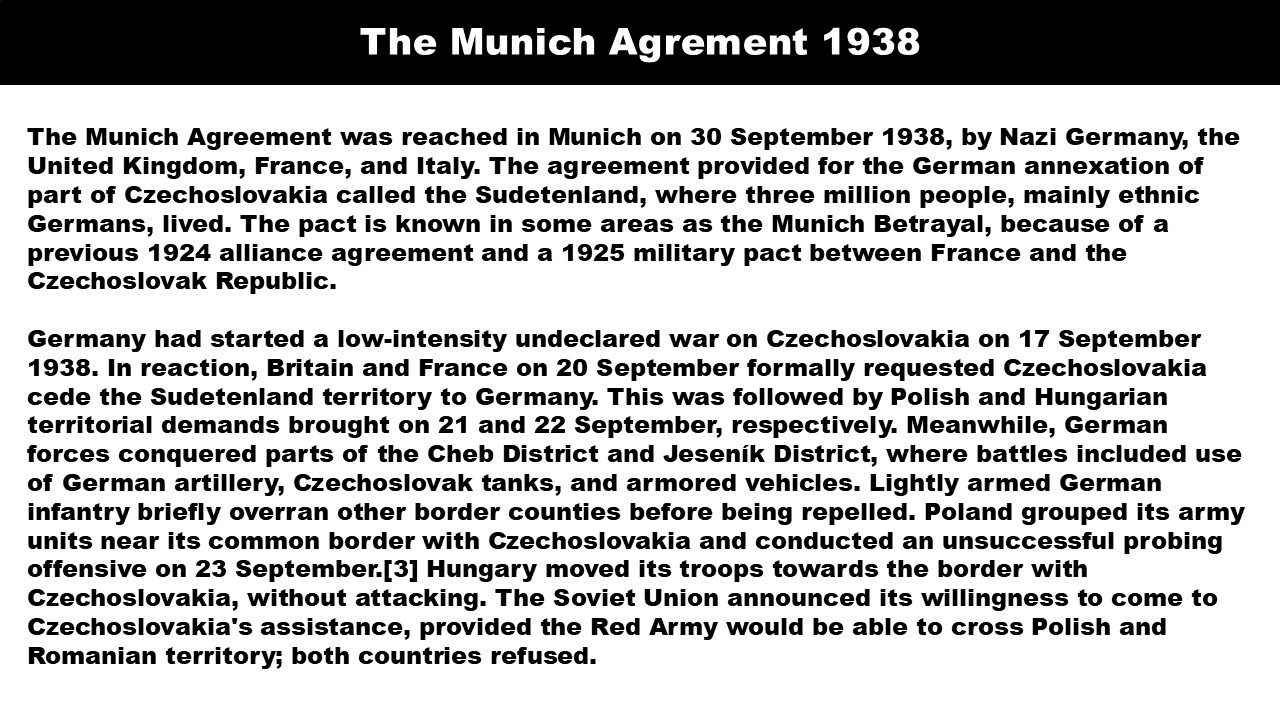Same story same misstakes 1938 and 2025 (English)
Propaganda is basically about getting a person to think in a certain way. To consciously try to convince people to maintain or change their attitude with the help of studied and selected messages. The primary aim is to get the recipient to follow the sender, regardless of the factual basis or truth content.
In states such as Nazi Germany and the Soviet Union, where the state government spent a lot of resources on shaping young people to become ideologically pure, it would be downright misleading not to include the education system in state propaganda. A common division in the literature on propaganda is to distinguish between “white”, “black” and “gray” propaganda.
In Munich, from 1935 to 1941, the Nazi Party held large-scale rallies, particularly the annual Nuremberg Rallies, which were significant propaganda events. These rallies, often held in Munich's Königsplatz, were meticulously staged to showcase Nazi power and ideology. The Munich Agreement, signed in 1938, was also a major event in Munich, where Germany, the UK, France, and Italy agreed to German annexation of the Sudetenland.
Propaganda Tool:
The Nazi Party used mass rallies in Munich, especially the Nuremberg Rallies, to mobilize public support, promote their ideology, and project an image of strength and unity.
Staging and Spectacle:
These events were carefully orchestrated, with large crowds, military parades, symbolic displays, and speeches by Nazi leaders like Hitler and Goebbels.
Munich as a Center of Nazi Power:
Munich, known as the "Hauptstadt der Bewegung" (Capital of the Movement), was a focal point for Nazi activities and propaganda
